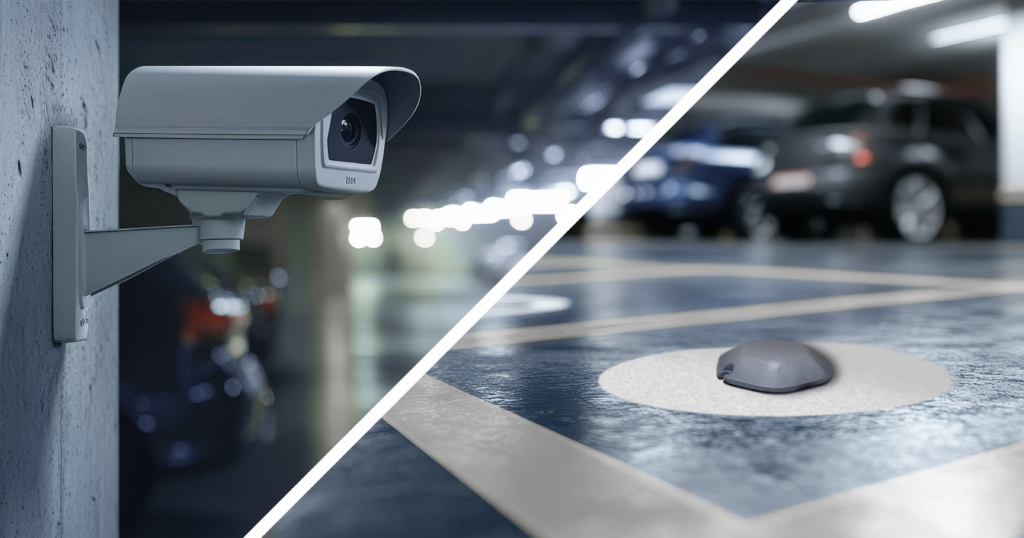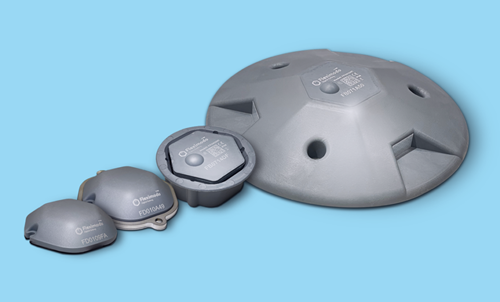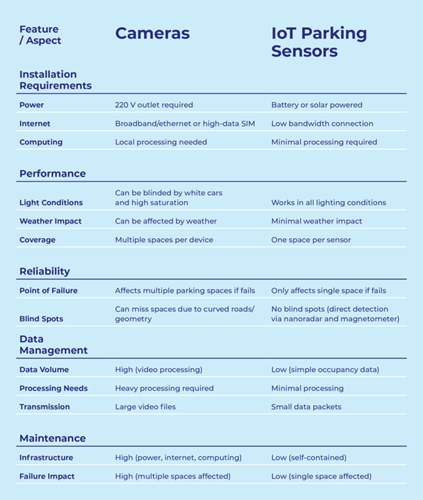Fleximodo: IoT Parking Sensors vs. Cameras
Why Hardware Matters in Smart Parking

Smart parking is revolutionizing how cities manage their parking spaces. While both cameras and IoT sensors can detect vehicle presence, there are crucial differences that make IoT sensors the preferred choice in many scenarios. Let’s explore why.
The Camera Conundrum
At first glance, cameras seem like an obvious solution – they’re already installed in many parking areas and can monitor multiple spaces simultaneously. However, they face several significant challenges:
Physical Limitations
- Light Sensitivity Issues The reflective nature of white cars and high-saturation environments can blind cameras, leading to false readings. This is particularly problematic in bright, sunny conditions or when dealing with metallic vehicle surfaces.
- Geometric Constraints Urban environments rarely offer perfect sight lines. Curved access roads to garages or complex street geometries can create blind spots, making it impossible for cameras to capture all parking spaces effectively.
Infrastructure Requirements
Cameras demand substantial supporting infrastructure:
- Constant power supply (220V outlets)
- Broadband internet connection (either ethernet or high-budget SIM cards)
- Local computing resources for video processing
Data Management Challenges
Video feeds generate massive amounts of data that need to be:
- Processed in real-time
- Stored securely
- Transmitted efficiently
The IoT Sensor Advantage

IoT parking sensors address these challenges through their targeted design:
Reliable Detection
- Work in all lighting conditions
- Unaffected by weather or reflective surfaces
- Direct measurement of vehicle presence
Minimal Infrastructure
- Low power consumption
- Can operate on battery or solar power
- Minimal data transmission needs
- No video processing required
Precise Data
- Individual space monitoring
- Accurate occupancy detection
- Real-time status updates
The Trade-off Discussion
While cameras can monitor multiple parking spaces with a single device, this creates a single point of failure – if one camera malfunctions, you lose visibility of multiple spaces. IoT sensors distribute this risk: if one sensor fails, only one parking space is affected.

Making the Right Choice
The decision between cameras and IoT sensors should consider:
- Environmental conditions
- Infrastructure availability
- Reliability requirements
- Maintenance capabilities
- Budget constraints
For most smart parking implementations, IoT sensors provide the most reliable, cost-effective, and manageable solution. Their targeted design addresses the specific challenges of parking space monitoring while minimizing infrastructure requirements and maintenance needs.
Conclusion
While cameras have their place in parking management, particularly for security and surveillance, IoT sensors are purpose-built for parking space detection. Their ability to operate reliably in various conditions, minimal infrastructure requirements, and distributed risk make them the superior choice for smart parking implementations.
 About Fleximodo
About Fleximodo
We are experts in IoT, miniaturization, long-distance communication, space-qualified electronics, and telecommunication technologies. Our team develops cutting-edge technologies, also leveraged for Fleximodo's smart parking solutions. Fleximodo offers high-precision, cost-effective IoT tools for sustainable and efficient parking.


Comments
There are no comments yet for this item
Join the discussion